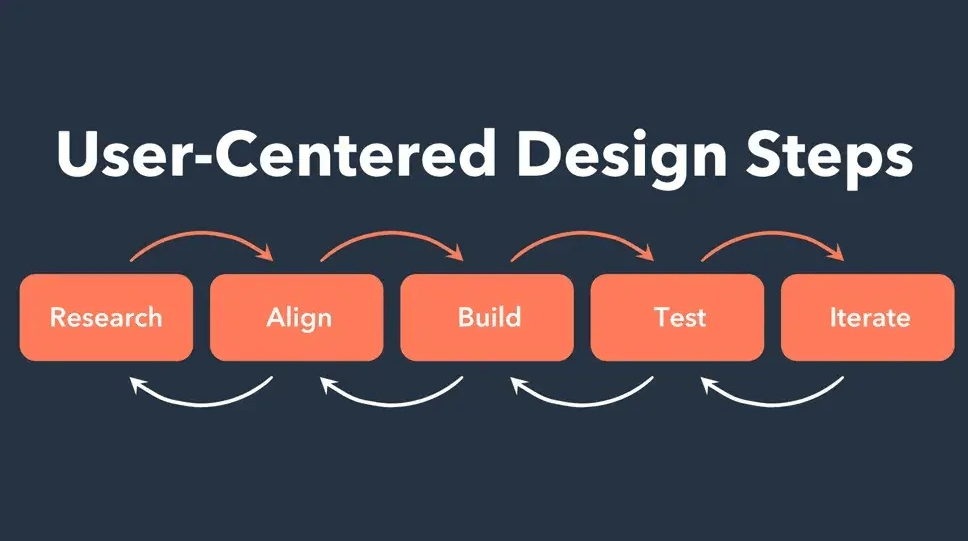Is your platform’s lack of usability costing you clients? According to a survey, 88% of customers are hesitant to visit a website experience again after having a bad experience. Users have grown more picky about things like sluggish load times, unclear navigation, and a lack of personalisation. In a cutthroat digital environment, companies need to make sure their platforms offer both usefulness and a pleasurable experience. So, how can you make sure users are interested in and return to your platform? Adopting cutting-edge tactics intended to improve the end-user experience is the solution. These strategies, which range from performance optimisation to interaction personalisation, build a user journey that promotes customer happiness, loyalty, and company expansion. This article will examine important tactics that can distinguish your platform from rivals and greatly improve the end-user experience. Let’s investigate the options that can encourage repeat business from your clients.
Table of Contents
Personalize the User Experience

Over time, user expectations have changed significantly. Individuals anticipate encounters that are catered to their particular needs, interests, and behaviours. Customisation is now required rather than merely a luxury. Companies who capitalise on personalization’s potential can greatly increase user engagement and build closer relationships with them.
Why Personalization Matters?
Users who receive personalised experiences feel heard, respected, and cherished. Personalisation results in a deeper, more interesting user experience, whether it takes the form of tailored offers that match their tastes or content recommendations based on past interactions. According to research, 74% of customers find it frustrating when website information isn’t tailored to them. This demonstrates how important it is for companies to stay away from general, one-size-fits-all strategies. Artificial intelligence (AI) and data analytics tools can assist companies in monitoring user behaviour and providing tailored experiences. For instance, platforms can provide personalised recommendations by examining browser history, purchase trends, or location information. A customer who has regularly perused particular products, for example, might get customised email marketing with related or complimentary products.
Implementing Personalization in Practice
Businesses can include personalisation into the user experience in a number of ways. Users can view goods or services that correspond with their previous actions thanks to dynamic website content, such as customised homepages. Engagement is increased by personalised email marketing, particularly when combined with recommendations or offers that expire soon. Customer service is another area where personalisation is present. AI-driven chatbots are able to recognise repeat customers by name, predict their queries based on past exchanges, and provide pertinent support. Users are more likely to remain interested and come back if your communication is more pertinent. After talking about personalisation, let’s concentrate on efficiency and speed optimisation for an ideal user experience.
Optimize Speed and Performance

Slow-loading platforms are the most annoying issue for users. A one-second lag in page load time can lower conversions by 7%, according to research. Platforms that fall short of performance standards run the risk of losing clients to quicker, more nimble rivals in a world where speed is everything.
Speed is Key
The user experience has a direct impact on your platform’s performance. Users anticipate smooth, fast interactions whether they are using a SaaS product, purchasing on an app, or surfing a website. Users are discouraged from performing their intended actions because of friction caused by slow load times, lagging pages, and delayed responses. For eCommerce websites, a delayed page load can result in missed sales chances and abandoned shopping carts.
How to Optimize Speed and Performance?
To guarantee speed and performance, attention must be paid to effective code, server optimisation, and content distribution. Content Delivery Networks (CDNs) are among the best methods for lowering load times. CDNs ensure speedier access for users regardless of their location by storing copies of your platform’s assets across numerous data centres across the globe. Optimising performance also requires reducing the size of image files and compressing a lot of resources. File minifiers and image compressors are examples of tools that reduce load times without sacrificing quality. Your platform will be more responsive if you optimise its code, eliminate superfluous scripts, and give priority to important assets. Particular consideration must be given to mobile users, who currently make up more than half of all web traffic. Making sure your platform is mobile-friendly is essential to delivering a dependable, quick experience. Because platforms that provide superior mobile experiences are given preference in search rankings, Google’s mobile-first indexing emphasises the need of mobile optimisation. After discussing performance and speed, let’s look at how user-centred design can improve user experience.
Focus on User-Centered Design

Functionality isn’t the only issue in the digital realm; a platform’s usability may make or ruin it. The goal of the user-centred design (UCD) technique is to develop products that address the needs, preferences, and pain points of users. An intuitive interface that offers a more pleasurable experience is produced when the user is given priority during the design process.
The Importance of User-Centered Design
A user-centred approach necessitates in-depth investigation and evaluation of the objectives, actions, and annoyances of the users. The layout should be easy to use, predictable, and straightforward. Higher retention rates result from people being more satisfied while interacting with your platform. On the other hand, people grow disinterested or frustrated by systems with cluttered interfaces or extremely complicated navigation. Users will leave the site and go to a rival if it takes them too long to find what they’re looking for. UCD reduces friction, enabling users to finish tasks more rapidly and effectively.
Critical Elements of User-Centered Design
Doing usability testing and user research is the first step in successfully implementing UCD. Make user personas that reflect various facets of your intended audience. Make sure features are designed with each user group’s specific demands in mind by using these personas as a reference. Frequent usability testing helps to improve the overall experience by identifying areas of friction and pain. Another important factor in user-centred design is accessibility. In addition to meeting legal accessibility requirements, making sure your platform is accessible to people with disabilities improves the user experience for a larger audience. A more inclusive design is facilitated by features like keyboard navigation, screen reader compatibility, and alternative text for images. Proactive customer service is the next stage in improving the user experience after design.
Provide Proactive Customer Support
In today’s industry, customer service has become essential to the whole user experience. Proactive customer care foresees users’ requirements before they materialise, whereas traditional assistance depends on people contacting support when they run into issues. This method reduces frustration and increases satisfaction.
Why Proactive Support Matters?
Active customer service builds a relationship of trust and dependability between your company and its customers. By providing prompt support—chatbots, live chat, or help pop-ups—businesses may address problems before they become more serious. Companies can step in at crucial times by providing pertinent information or advice rather than waiting for people to ask for assistance. For instance, a pop-up message providing guidance or training links can help users avoid aggravation when they are having trouble using a new function. Chatbots can help users by greeting them, asking if they need help, and assisting them with daily tasks.
How to Implement Proactive Support?
AI-powered chatbots and other automated tools enable organisations to offer 24/7 help. These bots can connect users with human support, offer information, and answer commonly asked queries. Additionally, consumers can receive real-time responses using live chat platforms without having to deal with emails or phone calls. Troubleshooting is only one aspect of proactive support. A human touch is added by sending follow-up emails to users to enquire about their progress after they have signed up or made a purchase. These communications can offer extra advice, materials, or rewards, demonstrating to users that their happiness is important even after the initial exchange. While proactive support guarantees prompt assistance, gathering and implementing user feedback contributes to long-term enhancements.
Collect and Act on Feedback
Feedback is essential to the continuous process of improving the user experience. Making data-driven decisions that improve user experience is made possible by knowing what people enjoy, dislike, and would want to see in your platform. Feedback provides insightful information and can be gathered via questionnaires, evaluations, or face-to-face contacts.
Why is Feedback Valuable?
Feedback highlights your platform’s strong points and areas for development. By listening to consumers, you can address their issues and keep improving your platform, whether it’s a technical hiccup, an excessively complex functionality, or a request for a new feature. In addition to enhancing the user experience, responding to feedback improves your relationship with customers. Customers are more likely to stick with your brand if they feel that their opinions are valued.
How to Gather and Use Feedback?
Post-interaction reviews, customer satisfaction (CSAT) questionnaires, and Net Promoter Score (NPS) surveys are all great ways to get feedback. Finding recurring problems or requests is made easier by examining input patterns. Following the collection of insights, adjustments that take user preferences into account must be made. For example, it’s obvious that a function has to be simplified or redesigned if several users complain about it being hard to use. Frequent updates that take user feedback into consideration keep users interested and demonstrate the platform’s dedication to ongoing development. After discussing feedback, let’s look at how enhancing mobile responsiveness might improve the user experience even more.
Improve Mobile Responsiveness
Since more than half of all web traffic comes from mobile devices, user experience depends on mobile responsiveness. Many people will be turned off by a platform that works well on desktops but poorly on mobile devices. Businesses need to make sure their platforms offer an optimal experience on all devices in order to maintain consumer engagement.
The Importance of Mobile Optimization
Users of mobile devices have high standards for usability, speed, and functionality. Frustration and, eventually, increased bounce rates result from a poorly optimised mobile platform with slow load times, unreadable information, or challenging navigation. This refers to missed opportunities, such as eCommerce cart abandonment or users not completing a desired action.
Best Practices for Mobile Responsiveness
Your platform will automatically adapt to different screen sizes thanks to responsive web design, giving users the best possible viewing experience on PCs, tablets, and smartphones. A more user-friendly mobile experience can be achieved by streamlining forms, making graphics smaller screen-friendly, and reducing the amount of scrolling required. Fast mobile load times are essential, in addition to responsive layouts. The mobile experience is improved by using mobile-friendly technologies including Accelerated Mobile Pages (AMP), reducing redirects, and compressing graphics. Features like minimum pop-ups, easily readable typefaces, and one-click navigation buttons are also valued by mobile users.
Conclusion
Are you prepared to improve the end-user experience on your platform and attract and retain customers? Developing a platform that surpasses user expectations requires customisation, performance optimisation, user-centred design, proactive support, and mobile responsiveness. Long-term success is fuelled by the loyalty and satisfaction that companies cultivate when they take the time to comprehend and prioritise the user experience. By collaborating with Nudge, you can make your platform really user-centred! Nudge offers the resources and know-how required to produce an exceptional user experience that entices users to come back for more.




